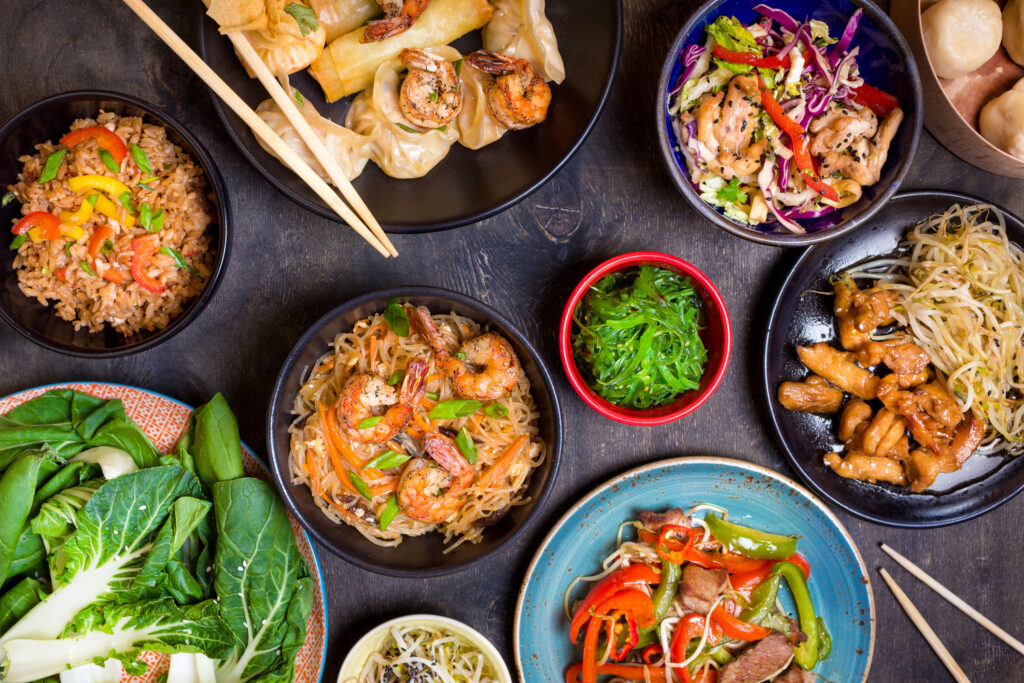Chinese Cuisine – Indulge in the Aromatic Delights

A Comprehensive Guide to Traditional Chinese Recipes
Chinese cuisine, renowned for its vibrant flavors and diverse regional influences, has captured the palates of food enthusiasts worldwide. From the bustling streets of Beijing to the serene landscapes of the Sichuan countryside, a culinary tapestry awaits to tantalize your taste buds.
In this comprehensive guide, we delve into the heart of Chinese culinary traditions, presenting a delectable selection of classic and innovative recipes. Whether you’re a seasoned home cook or a novice seeking to explore the depths of this culinary wonderland, this article will guide you through the intricacies of Chinese gastronomy.
A Culinary Journey Through China’s Regions
The vast expanse of China is home to a multitude of cuisines, each boasting unique flavors and cooking techniques. From the aromatic dishes of the north to the fiery delights of the southwest, the culinary landscape of China is a testament to the country’s rich history and cultural diversity.
- Northern Cuisine: Known for its hearty dishes and wheat-based staples, northern Chinese cuisine showcases the flavors of the wheat belt. Steamed buns, noodles, and dumplings take center stage, alongside braised meats and savory soups.
- Cantonese Cuisine: Originating from the southern province of Guangdong, Cantonese cuisine emphasizes freshness and balance. Seafood, vegetables, and rice feature prominently, with dishes showcasing the Cantonese mastery of stir-frying and steaming.
- Sichuan Cuisine: The bold and spicy flavors of Sichuan cuisine are a testament to the region’s fiery peppers. Numbing heat and pungent aromas define Sichuan dishes, which often incorporate fermented ingredients and aromatic spices.
- Shanghai Cuisine: A melting pot of flavors from across China, Shanghai cuisine offers a sophisticated blend of sweet, salty, and savory notes. Steamed or braised dishes, delicate pastries, and iconic street snacks captivate the taste buds.

Mastering Essential Chinese Cooking Techniques
To fully appreciate the culinary delights of Chinese cuisine, it is essential to grasp some fundamental cooking techniques. These techniques, honed over centuries, contribute to the unique flavors and textures that characterize Chinese dishes.
- Stir-frying: A rapid cooking technique that involves tossing ingredients over high heat in a wok or skillet. Stir-frying preserves the vibrant colors and crisp textures of vegetables while infusing them with aromatic spices and sauces.
- Steaming: A gentle cooking method that retains the natural flavors and nutrients of ingredients. Steaming is commonly used to prepare delicate seafood, vegetables, and dumplings, showcasing their inherent flavors.
- Braising: This slow-cooking technique involves simmering meat or poultry in a flavorful liquid. Braising tenderizes the meat while infusing it with rich aromas and flavors.
- Deep-frying: A method of cooking in hot oil that creates a crispy exterior and a tender interior. Deep-frying is commonly used to prepare meat, seafood, and vegetables, adding a touch of indulgence to savory dishes.
Exploring the World of Chinese Ingredients
Chinese cuisine is renowned for its extensive use of a diverse array of ingredients. From aromatic spices to exotic vegetables, each ingredient adds its unique flavor profile to the culinary tapestry.
- Soy sauce: A fermented sauce made from soybeans, soy sauce is a ubiquitous ingredient in Chinese cooking. It imparts a salty and umami flavor to dishes, adding depth and balance.
- Ginger: A versatile aromatic root, ginger adds a pungent and warming flavor to both sweet and savory dishes.
- Garlic: A piquant bulb, garlic is an essential ingredient in many Chinese marinades, sauces, and stir-fries. Its pungent aroma and flavor add depth to dishes.
- Chilli peppers: The fiery heat of chilli peppers is a defining characteristic of Sichuan cuisine. From mild to intensely spicy varieties, chilli peppers add a vibrant kick to dishes.
- Sichuan peppercorns: These unique peppercorns impart a numbing sensation to Sichuan dishes. Their complex flavor profile adds an extra layer of spice and complexity.

Recipes to Ignite Your Taste Buds
Now that we’ve explored the fundamentals of Chinese cuisine, let’s delve into some delectable recipes that will transport you to the heart of this culinary wonderland.
- Classic Sichuan Stir-Fried Chicken with Chilli Peppers: This fiery dish showcases the bold flavors of Sichuan cuisine. Tender chicken is seared in a sizzling wok, coated in a fragrant sauce that combines the heat of chilli peppers, the pungency of garlic and ginger, and the umami of soy sauce.
- Cantonese Steamed Fish with Ginger and Soy Sauce: This delicate dish highlights the freshness of seafood and the subtle flavors of Cantonese cuisine. Steamed fish is topped with aromatic ginger and soy sauce, allowing the natural sweetness of the fish to shine through.
- Northern Chinese Braised Pork Belly: This hearty dish is a staple of northern Chinese cuisine. Slow-braised pork belly becomes tender and succulent, absorbing the rich flavors of soy sauce, rice wine, and aromatic spices.
- Shanghai Soup Dumplings: These delicate dumplings, filled with savory broth and minced pork, are a culinary masterpiece. The thin dough wrapper bursts with flavor in your mouth, releasing a symphony of umami.
Conclusion
The world of Chinese cuisine is an endless culinary adventure, filled with vibrant flavors and innovative creations. This comprehensive guide has provided a glimpse into the rich traditions, cooking techniques, and tantalizing ingredients that make Chinese food so beloved worldwide.
Whether you’re a seasoned chef or a curious home cook, we encourage you to explore the depths of Chinese gastronomy and discover the delectable delights that await your taste buds. From the fiery intensity of Sichuan cuisine to the subtle elegance of Cantonese dishes, there is a culinary journey to be savored in every corner of this culinary wonderland.
